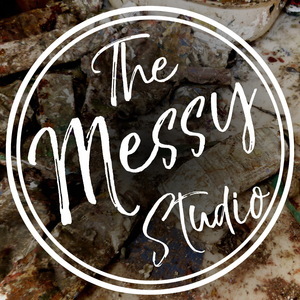The Messy Studio with Rebecca Crowell
The podcast at the intersection of art, travel, business, philosophy, and life in general.
Displaying all 3 Episode of The Messy Studio with Rebecca Crowell with the tag “practice”.
-
Episode 220: The Blank Canvas
September 10th, 2022 | 38 mins 58 secs
art, blank canvas, creativity, getting started, materials, practice, rebecca crowell, time
Beginning a work of art is a leap into the unknown. Facing a blank canvas or panel or sheet of drawing paper, a lump of clay, a block of wood, a freshly prepared litho stone, or the untouched material of any art form is exhilarating but also a bit intimidating. How do you approach starting new work? Do you feel the energy of a fresh start, or is there some worry about how things will go? How do you overcome resistance to starting something new? Today we will talk about the ups and downs in launching into new work.
-
Episode 189: Interview with Jim Scherbarth
September 25th, 2021 | 40 mins 39 secs
art, creativity, focus, jim scherbarth, passion, practice, purpose, rebecca crowell, teaching, voice
James Edward Scherbarth was a dear friend, colleague, and teacher, and artist who developed profound and personal ways of working in just a few years following his retirement in his mid-60s. Today we share our interview with Jim near the end of his life in which he discusses his life, work, and teaching philosophy. Jim passed away a few days after this recording, on June 22, 2021. We are very honored to have had this opportunity to hear what he wished to share with our listeners.
-
Episode 154: The WOW Factor
November 28th, 2020 | 32 mins 9 secs
art, composition, creativity, fundamentals, practice, rebecca crowell, the wow factor
Words like “wow,” “stunning,” and “amazing” are music to the ears of many artists. We all create plenty of art that elicits no more than a passing glance or Instagram “like” and that’s fine—it’s part of the process. If we are making art constantly, what we make includes a range of qualities and ideas. But what is it about those special pieces that makes them stand out and really engage the viewer? What can we learn from them and what questions do they raise?
